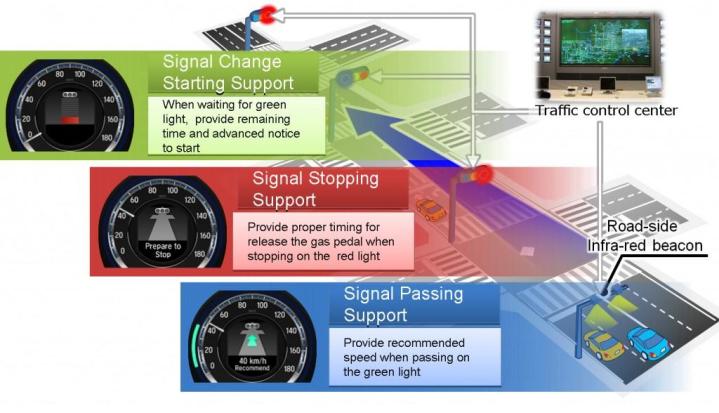
Do you hate it when the light turns green, but the car in front of you refuses to move? Soon, your car might hate it, too.
Honda is testing a system that allows cars to communicate with traffic lights, which could improve the flow of traffic in big cities.
The prototype system combines vehicle position and speed data with information on the cycling of lights to advise drivers of the proper speed they need to make it through as many intersections as possible without stopping.
Conversely, the system can also alert a driver to an impending red light so he or she can slow down gradually, rather than braking abruptly. Like a similar system recently announced by Audi, it can also count down the seconds to a green light, giving the driver plenty of advance notice.
The technology is based on vehicle-to-vehicle communication (V2V), a form of wireless communication that allows cars to share information with each other and infrastructure.
V2V is already viewed by many as a way to make cars safer by providing drivers with more information about their surroundings, which why the National Highway Traffic Safety Administration (NHTSA) is pushing for a V2V mandate.
Honda believes this technology could improve fuel efficiency and traffic flow in urban areas, but it would likely save a bit of aggravation as well.
The carmaker will test this concept on public roads in Utsunomiya City in Tochigi Prefecture, Japan. The test will involve up to 100 vehicles, on routes Honda says are typically used by commuters.
Engineers will analyze vehicle data to see if the system really does help drivers and, if it really does save fuel.
If the test proves successful, soon your car may become the ultimate backseat driver.


